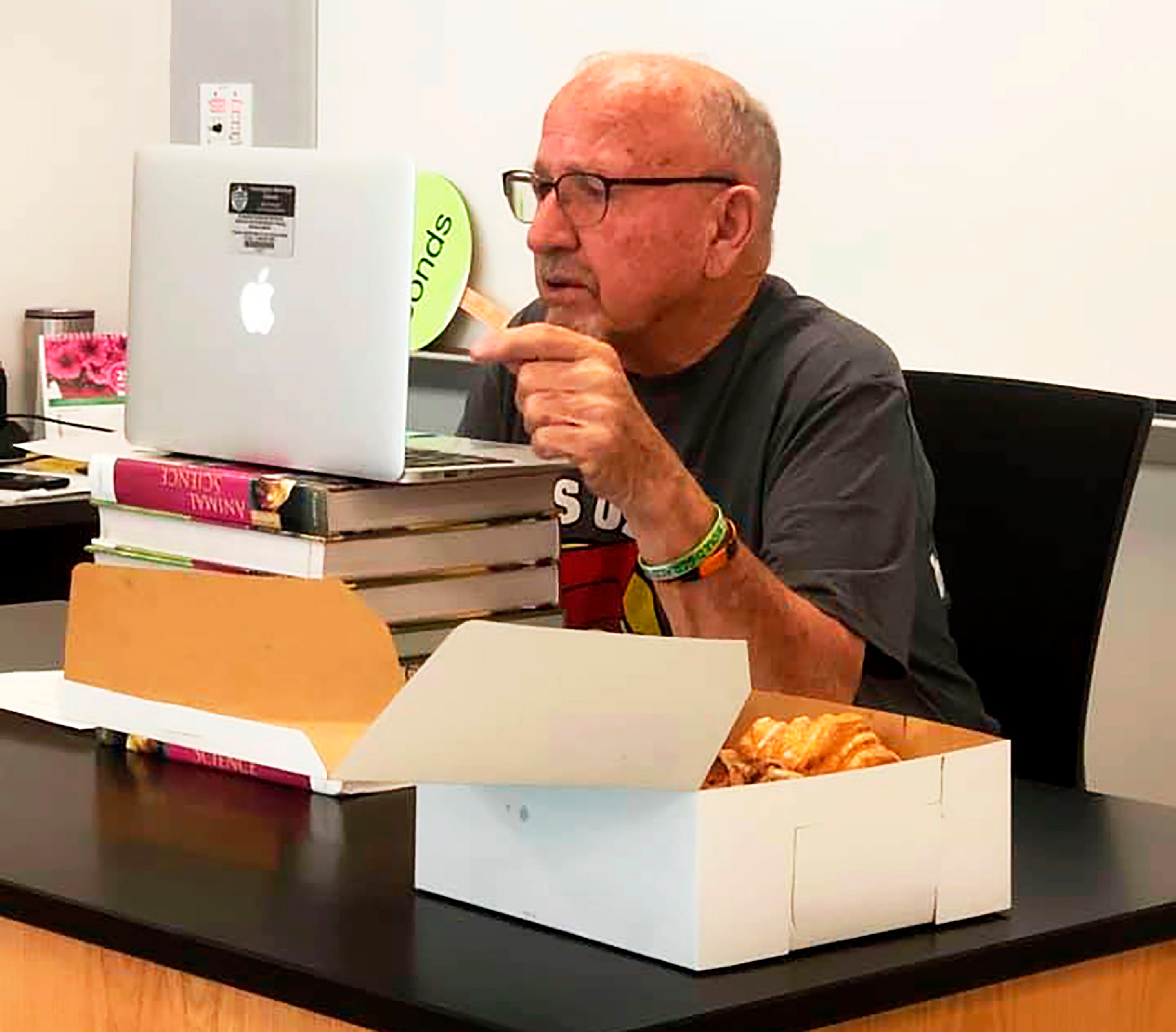Some veteran teachers skip wave of pandemic-era retirements
Some veteran teachers are sticking it out during the pandemic while others confronted with the headaches of distance learning and the health risks have retired early or taken leave

Your support helps us to tell the story
From reproductive rights to climate change to Big Tech, The Independent is on the ground when the story is developing. Whether it's investigating the financials of Elon Musk's pro-Trump PAC or producing our latest documentary, 'The A Word', which shines a light on the American women fighting for reproductive rights, we know how important it is to parse out the facts from the messaging.
At such a critical moment in US history, we need reporters on the ground. Your donation allows us to keep sending journalists to speak to both sides of the story.
The Independent is trusted by Americans across the entire political spectrum. And unlike many other quality news outlets, we choose not to lock Americans out of our reporting and analysis with paywalls. We believe quality journalism should be available to everyone, paid for by those who can afford it.
Your support makes all the difference.At age 86, agriculture teacher Gerald Bonds of Farmington, New Mexico, has seen plenty of crises during his career. He sees no reason to call it quits over the coronavirus pandemic
Bonds is in his 58th year of teaching at Farmington High School and, like most teachers in his state, has been instructing his students remotely — an arrangement he despises.
“I hate it. I want to see the students face to face and talk to them,” Bonds said in a video interview.
Confronted with the technology headaches of distance learning and the health risks, some teachers have retired early or taken leave from work. But many veteran instructors like Bonds are sticking it out.
New Mexico is tied with Maine for having the oldest teachers in the country, with one in four older than 55, according to a 2018 National Center for Education Statistics survey of teachers and principals. And almost 6% of New Mexico’s teachers and teaching assistants are 65 or older, according to data from the New Mexico Public Education Department.
With few exceptions, New Mexico’s schools have been providing only distance learning, which so far has spared many teachers from having to consider the health risks that could come from being in classrooms with students.
“We are prioritizing health and safety. We have said that those teachers who do fall into those high-risk categories can ask for a low-contact or no-contact teaching assignment for this year,” said New Mexico Education Secretary Ryan Stewart. “It’s going to pose some pretty intense challenges in terms of staffing and being able to return (to in-person learning) in some districts.”
Bonds said he has been adapting to distance learning, with the assistance of colleagues who help him file lesson plans online and set up video chats. But it has been difficult because teaching students about raising animals and growing plants is fundamentally hands-on.
“Let’s get through this and get back to person-to-person classes. I think that’s important because I think these young people are going through a lot of emotional things right now,” Bonds said.
In southeastern New Mexico, Spanish teacher Manuel Acosta, 71, said video chats are just the latest tool in a long line from chalk to whiteboards to projectors to email.
He plans to teach remotely until the pandemic is over, even if some of his students at Hobbs High School start attending school in person.
Acosta was excused from in-person learning after getting a pacemaker in March. His 86-year-old mother, who lives separately, was also a factor. While a home health aide cares for her during the week, and Acosta has cut down his visits, he shops for her and visits every weekend. He still wants to teach, even if it can’t be in person.
“I enjoy teaching; I enjoy the interaction with the students," said Acosta, who has spent 46 years serving students across half of the state’s rural districts. “I don’t know anything else.”
___
Attanasio is a corps member for the Associated Press/Report for America Statehouse News Initiative. Report for America is a nonprofit national service program that places journalists in local newsrooms to report on under-covered issues. Follow Attanasio on Twitter.